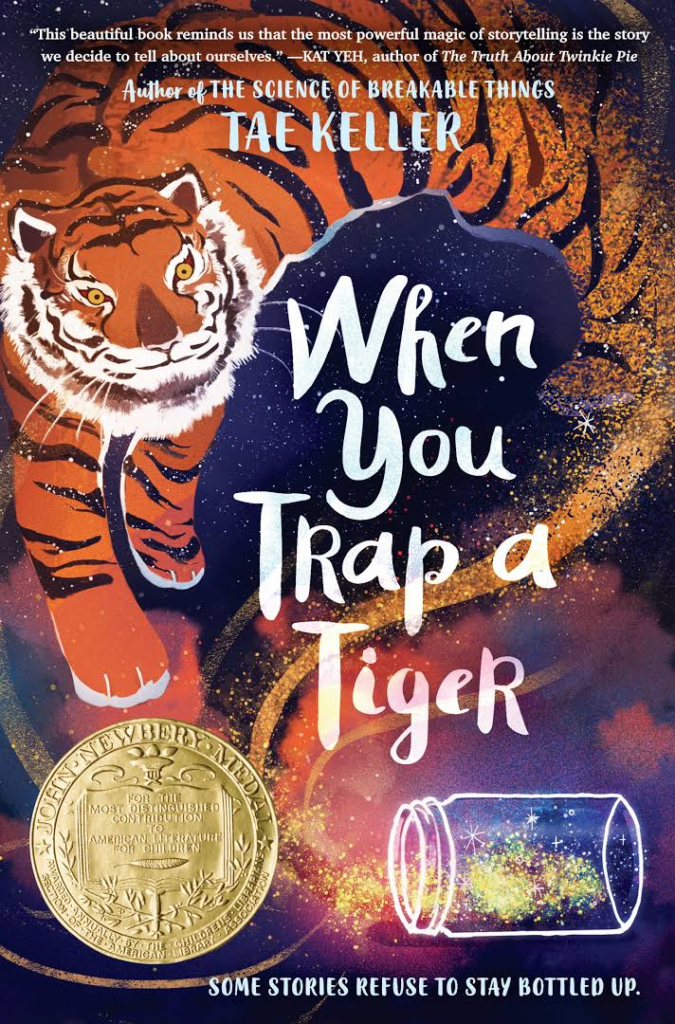
When You Trap a Tiger Summary
Introduction:
“When You Trap a Tiger” is a young adult novel written by Tae Keller, published in 2022. It’s a poignant and beautifully written story blending magical realism with contemporary issues, exploring themes of family, identity, culture, trauma, and healing. The novel seamlessly integrates Korean folklore and traditions into a compelling narrative.
Main Characters:
- Lily: A twelve-year-old Korean-American girl grappling with the recent death of her grandmother and the burden of a family secret. She’s observant, brave, and fiercely loyal to her family.
- Halmoni (Grandmother): A strong and vibrant woman who, even in death, continues to influence the lives of her family. Her presence looms large, even after her passing, leaving a legacy of love and unspoken secrets.
- Sam: Lily’s older brother who is struggling to find his place and deal with the family’s grief. He’s protective of Lily but also has his own emotional struggles he’s hesitant to share.
- Mom: Lily’s mother, who is dealing with her own grief and the weight of family expectations. She strives to keep her family together while navigating her own trauma.
- The Tiger: A powerful and mysterious creature from Korean folklore, representing both danger and healing, acting as a catalyst for emotional growth.
Summary:
“When You Trap a Tiger” follows twelve-year-old Lily and her family as they navigate the aftermath of their Halmoni’s (grandmother’s) death. The family, already grappling with strained relationships, is further shaken by the revelation of a secret Halmoni kept hidden for decades – a connection to a powerful tiger spirit from Korean folklore. The family’s Korean heritage, so often dismissed or ignored, now takes center stage as Lily is tasked with an ancient ritual: trapping the tiger in order to save her family.
The journey to trap the tiger, however, is far more than a literal quest. It’s a metaphor for Lily’s need to confront and process the grief and trauma she, her brother, and her parents have each carried within them for years. As Lily delves into the world of Korean folklore, searching for answers and a way to understand and perform the ancient ritual, she learns more about the deep, unspoken wounds that have shaped her family. She confronts the family’s historical baggage, including the trauma her father suffered during the Korean War. Through her search, Lily uncovers the emotional scars left by her family’s history and discovers the secrets that have been passed down through generations.
Each attempt to trap the tiger is accompanied by emotional breakthrough for both Lily and her family members. The tiger doesn’t act as a simple antagonist; it instead catalyzes intense emotional moments, forcing the family members to address their unresolved conflicts and individual traumas. We see Sam grappling with his own identity and fears, and we witness Lily’s mother finally begin to confront her own grief and unresolved issues. The novel brilliantly uses the magical realism of the tiger to create a parallel narrative where the external battle to trap the tiger reflects the internal battle each family member faces.
The narrative skillfully weaves between Lily’s present-day struggle and flashbacks providing insights into her Halmoni’s past, offering a complex and nuanced portrait of family dynamics across generations. Through these interwoven stories, we see the immense strength and resilience of the human spirit in the face of immense loss and difficult truths. Ultimately, Lily’s journey isn’t just about capturing a tiger; it’s about freeing herself and her family from the emotional cages they’ve built around themselves, allowing for healing and reconciliation.
Themes and Analysis:
- Grief and Healing: The novel deeply explores the complexities of grief, showing how it manifests differently in individuals and how healing is a long and arduous process.
- Family and Intergenerational Trauma: The story highlights the impact of unresolved family issues and how past traumas are carried across generations.
- Cultural Identity and Heritage: The incorporation of Korean folklore and traditions demonstrates the richness of cultural heritage and its significance in shaping personal identity.
- Magical Realism: The integration of fantasy elements with realistic scenarios enhances the emotional depth and offers a unique way to explore themes of healing and self-discovery.
- Resilience and Hope: Despite facing significant challenges, Lily and her family show remarkable resilience, ultimately finding hope for a brighter future.
Conclusion:
“When You Trap a Tiger” is a truly exceptional young adult novel that goes beyond the typical coming-of-age story. It’s a moving and insightful exploration of family, grief, and healing, beautifully woven with elements of Korean folklore. The compelling characters, the magical realism, and the thoughtful exploration of complex themes make this a book that stays with you long after you finish reading. It’s a story about the power of family, the importance of cultural heritage, and the enduring strength of the human spirit in the face of adversity—making it a rewarding and unforgettable read for readers of all ages.
When you trap a tiger summary By Cavestudy.com.
Follow us on Facebook and Instagram.